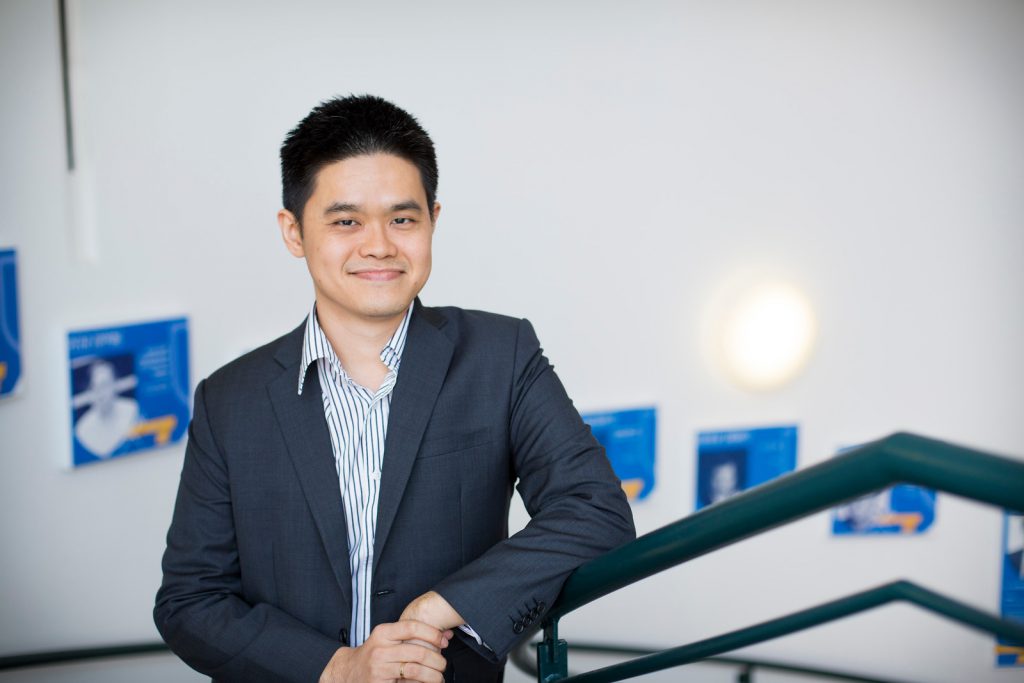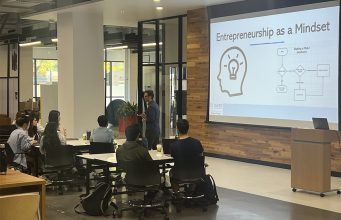
Conventional wisdom has it that innovation is very much a team sport. To create a breakthrough innovation that is vastly more successful than its predecessors, you need to prioritize teams over the individual.
Not always, according to Tian Heong Chan, assistant professor of information systems & operations management at Emory’s Goizueta Business School. It depends very much on the degree to which the invention can be broken down into discrete chunks of work.
Chan and colleagues from INSEAD published a paper, “Revisiting the Role of Collaboration in Creating Breakthrough Inventions,” in the Manufacturing and Service Operations Management journal in 2020. In it, they look at more than one million U.S. patents for new products filed between 1985 and 2009. The majority of these patents were awarded for innovations in function—machines, processes or products that delivered some kind of utility. The others corresponded to design; in other words, the distinct visual form or aspect of a product, like Coca-Cola’s iconic curvy bottle or the Apple iPhone.
Sifting these patents for breakthroughs (those ranked by citations as being in the top 5 percent of their product class), Chan and his colleagues were able to look at whether standout innovations were the product of teamwork or whether any of them had actually been developed by a lone innovator. And what they found sheds fascinating and useful new light on the dynamics undergirding the innovation process.
As a rule, breakthrough functional products—those awarded patents for some kind of utility—do tend to be created by teams. But when it comes to inventions that are centered on breakthrough designs, it’s a whole different ball game. Here, the solo inventor is every bit as likely to create a breakthrough as an entire team.
This is probably down to what Chan calls the “holistic nature” of design.
“The way we think about an iconic design—think the iPhone, or the Coke bottle—is essentially holistic. In other words, we think about it as a whole thing, defined by the entirety of its design and not by its individual parts or its components.”
Functional inventions, on the other hand, tend to be more modular in nature. A computer, for example, has functions that are much easier to partition into different modules or components.
Take the Dell PC. These are computers that are configured to work with interchangeable parts that can be easily connected, said Chan. It’s no surprise that teams of collaborators build Dell PCs, because the modularity of the product means that different members can work fairly independently on different parts, sharing resources and leveraging the advantages of knowledge and skill diversity.
But with a more holistic design invention, it’s a very different dynamic, he said.
“Imagine a team trying to work together to create something like a logo or even a painting. It’s feasible, but the time they will spend trying to coordinate and communicate ideas among different people is likely to create bottlenecks that the lone inventor simply doesn’t face.”
With design inventions, the “divide and conquer” dynamics of teamwork can actually slow progress down. The lone inventor, on the other hand, can mentally assess, iterate and discard elements with relative ease.
Chan and colleagues found that the same logic applies to functional inventions that are less modular in nature. Consider the two-stroke internal combustion engine first developed by Karl Benz—every component in the engine is specifically designed to fit with other components in a tightly integrated manner. Similar to design inventions, Chan and his co-authors found that lone inventors do relatively better on these types of integral inventions.
Does this mean that collaboration is a disadvantage for firms looking to create a breakthrough design? Not at all, said Chan.
Lone inventors still benefit from collaborating with others. In fact, the study found that solo inventors with extensive collaboration networks of their own reap many of the team-oriented benefits of creative feedback and resource sharing that lone operators who do not collaborate simply don’t have. So individuals still need to build a collaboration network as a channel of valuable information.
The key takeaway for businesses looking to increase their chances of a breakthrough is to think about the type of innovation that they have in their sights, Chan said, and to align their human resources and collaboration structures around how holistic or modular that innovation is.
“Our study clearly shows that the cost-benefit trade-offs for teams depend on the modularity of the invention they’re working on,” Chan said. “The advantage a team brings will vary greatly depending on how much and how easily that invention can be partitioned into independent modules and components. If your focus is design and integral inventions, you would do well to see lone creators as a highly valuable resource. Especially those with an extensive collaboration network.”











